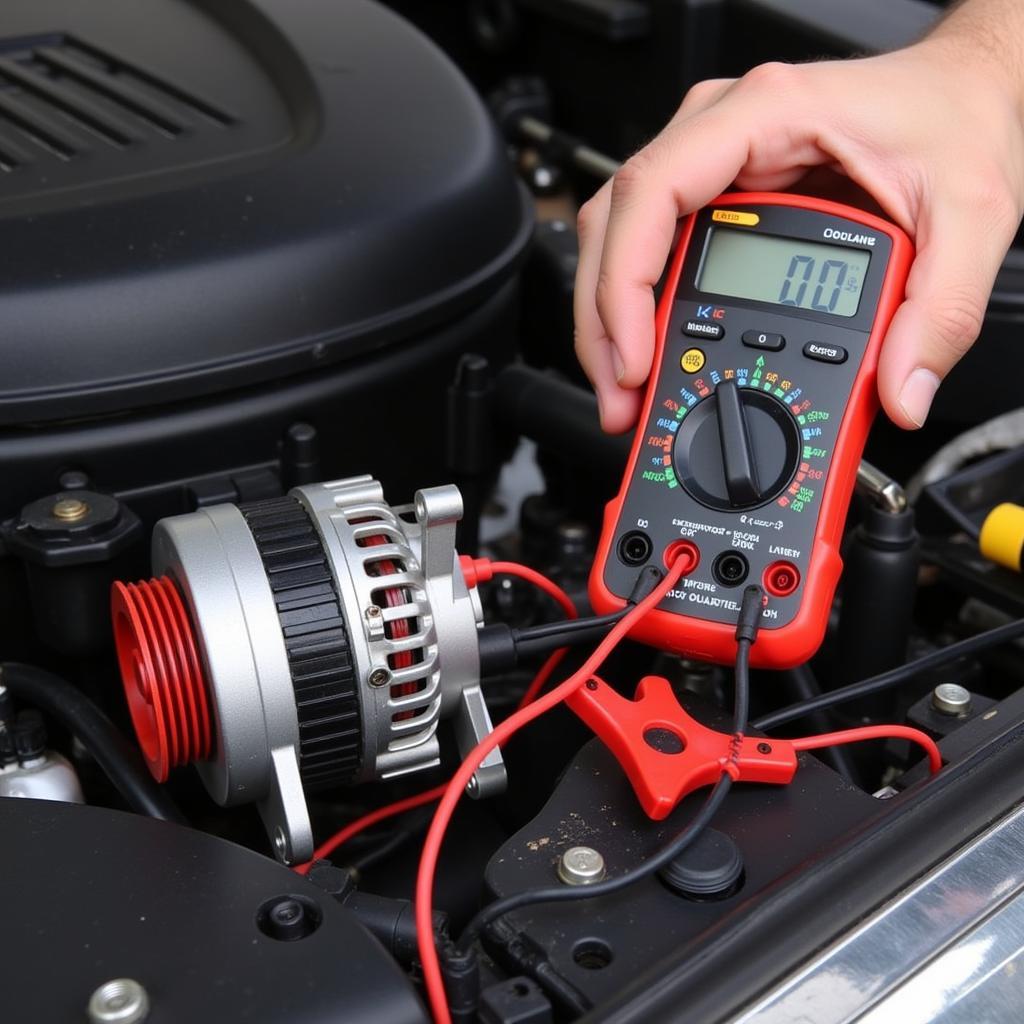A flickering battery warning light can be a frustrating and concerning issue. This comprehensive guide dives into the reasons why your battery warning light comes on intermittently, offering diagnostic tips, troubleshooting advice, and potential solutions, empowering you to tackle this problem head-on.
Decoding the Intermittent Battery Warning Light
The battery light is your car’s way of telling you there’s a problem with the charging system. When it illuminates intermittently, it suggests an underlying issue that isn’t constantly present. This inconsistency can make diagnosis tricky, but understanding the potential causes is the first step towards resolution.
Common Culprits Behind the Flickering Light
Several components can contribute to an intermittent battery warning light. Here are some of the most common culprits:
- Loose or corroded battery terminals: A poor connection between the battery and the cables can disrupt the charging circuit, causing the light to flicker.
- Failing alternator: The alternator is responsible for recharging the battery while the engine is running. A failing alternator may intermittently fail to provide sufficient charge, triggering the warning light.
- Worn serpentine belt: The serpentine belt drives the alternator. A worn or slipping belt can reduce the alternator’s efficiency, leading to intermittent charging problems.
- Faulty voltage regulator: The voltage regulator controls the alternator’s output. A malfunctioning regulator can cause voltage fluctuations, resulting in the intermittent illumination of the battery light.
- Wiring issues: Damaged or corroded wiring in the charging system can create intermittent disruptions, affecting the charging process.
Diagnosing the Problem: A Step-by-Step Guide
- Check the battery terminals: Inspect the battery terminals for corrosion or looseness. Clean any corrosion with a wire brush and baking soda solution, and tighten the terminals securely. what does key fob mean
- Inspect the serpentine belt: Examine the serpentine belt for wear, cracks, or fraying. If the belt appears worn, replace it.
- Test the alternator: Use a multimeter to test the alternator’s output voltage. A healthy alternator should produce around 13.5-14.5 volts.
- Check the voltage regulator: Test the voltage regulator with a multimeter. If the regulator is faulty, replace it.
- Inspect the wiring: Carefully examine the wiring in the charging system for any damage or corrosion. Repair or replace any damaged wires.
 Testing Car Alternator Output with Multimeter
Testing Car Alternator Output with Multimeter
Why is my Battery Light Coming On and Off? Common Questions
This flickering behavior often points to an intermittent fault in the charging system. The problem isn’t constant, which can make pinpointing the cause challenging.
What should I do if my car battery light comes on intermittently?
It’s crucial to address this issue promptly to avoid potential breakdowns. Start by checking the battery terminals for corrosion or looseness. If the problem persists, further diagnosis by a qualified technician is recommended. what does fob mean in key fob
“Ignoring an intermittent battery light can lead to more significant problems down the road. It’s always best to address the issue early,” says John Smith, Automotive Electrical Engineer at Advanced Auto Solutions.
Remote Diagnostics and Software Solutions
Modern vehicles often rely on complex electronic systems. Remote diagnostics and software installations can sometimes address underlying software glitches that contribute to intermittent battery light issues. what does fob mean for keys These advanced tools allow technicians to access and analyze vehicle data remotely, potentially identifying and resolving problems without physical intervention.
 Remote Diagnostics Software Interface for Car Troubleshooting
Remote Diagnostics Software Interface for Car Troubleshooting
“Remote diagnostics can be a game-changer when it comes to resolving complex electrical issues, including intermittent battery light problems,” explains Sarah Johnson, Senior Diagnostic Technician at Remote Automotive Diagnostics.
Battery Warning Light Intermittently: Conclusion
Addressing an intermittent battery warning light requires a systematic approach. By understanding the potential causes and following the diagnostic steps outlined in this guide, you can effectively troubleshoot the issue and keep your vehicle running smoothly. Remember, early diagnosis and intervention are key to preventing more serious problems. Don’t ignore that flickering light – address it today! what does fob for keys mean
FAQ
- Can a bad battery cause the battery light to come on intermittently? While less common, a failing battery can sometimes contribute to an intermittent battery light, especially if it struggles to hold a charge.
- Is it safe to drive with an intermittent battery light? While you might be able to drive for a short period, it’s not recommended. The underlying issue could worsen, leading to a breakdown.
- How much does it cost to fix an intermittent battery light issue? The cost varies depending on the underlying cause. Simple fixes like cleaning corroded terminals are inexpensive, while replacing an alternator can be more costly.
- Can extreme temperatures affect the battery light? Extreme temperatures can impact battery performance and potentially contribute to charging system issues.
- Should I replace my battery if the light comes on intermittently? Not necessarily. A battery replacement might not resolve the issue if the problem lies with the charging system. Proper diagnosis is essential. key fob meaning wikipedia
- Can a loose ground connection cause the battery light to flicker? Yes, a poor ground connection can disrupt the charging circuit and cause the battery light to come on intermittently.
- What tools do I need to diagnose a battery light issue? Basic tools like a multimeter, wire brush, and wrench are helpful for initial diagnostics.


